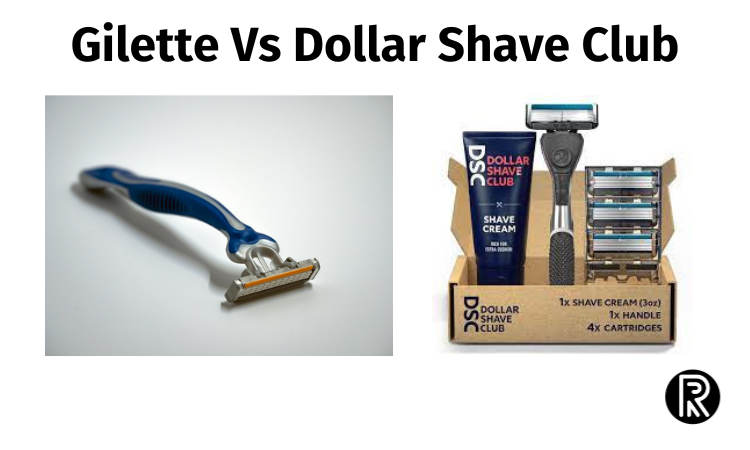Last Updated on Wed-Mar-2024 by Robert Bogere
In this digital era, your brand positioning is not just a strategy. It’s your story waiting to be told. It’s about making sure your target audience knows what your brand does and who it’s for.
2 years back, I found myself in trouble, trying to carve out my space in a newly crowded space. Like many entrepreneurs, I struggled with questions of how to make my brand stand out and resonate with customers.
It was during this journey that I resorted to the concept of brand positioning—a compass guiding me towards clarity and distinction.
In this article, I’ll take through what brand positioning is, different effective brand positioning strategies, and key frequently asked questions.
- What is brand positioning?
- Effective brand positioning strategies to elevate your brand in 2024
- Effective brand positioning strategies FAQs
- What are some common pitfalls brands should avoid when implementing a differentiation positioning strategy?
- How can a brand effectively communicate its value proposition to consumers?
- What role does consumer research play in developing a successful brand positioning strategy?
- How can a brand maintain consistency in its positioning strategy across different marketing channels and touchpoints?
- In what ways can a brand adapt its positioning strategy to respond to changes in consumer preferences or market dynamics?
- How can a brand effectively differentiate itself from competitors in a crowded market?
- Effective Brand positioning strategies wrap up
What is brand positioning?
David Ogilvy defined positioning as what your products/services do and who it is for.
According to Awware, positioning is the kind of strategy your business uses to promote its brand and attract your customers’ attention.
Bharat Patel in his article defined positioning as creating an identity or image within your target customers’ minds.
Put, your brand wants a space in your customers’ minds. Whenever your customers think of a product in line with yours, it’s your brand remembered.
Discover: How you can develop your brand positioning statement
Effective brand positioning strategies to elevate your brand in 2024
1. Price based positioning
Want to position your products or services as affordable? That way, the kind of effective brand positioning strategy you’re to use is price-based.
One time, I received a message from a business founder seeking my opinion about their pricing strategy in comparison with their competitors.

With such positioning, you’re focusing your products/services on whatever competitive prices exist in your industry.
You decide to position your product as a low-priced product as affordable or a highly priced product as high quality. You can also make your prices consistent across all your channels.
For example, setting the same prices across different states. Think of Gilette and Dollar Shave Club. One offers its affordable products to the other.

As Adam Carpenter’s Toyota example. In the automotive space, Toyota’s car prices are affordable to those of other competitors in the marketplace. Its latest Corolla brand costs $36,000 and BMW 330i at $44,795.
2. Competition based positioning
What makes your brand special from others? With this kind of positioning, you compare your brand to your competitors. You review the key differences of your offer in line with those of your competitors.

Think of;
– Offer benefits
– Target audience
– Product/service qualities
– Product/service features
You need to carry out your research to know exactly what your competitors are good at. Where you find weak points, it’s where you take advantage of them.
Discover: How I developed my brand essence + plus other examples
3. Leader based positioning
Such brand positioning is when you want to become a leader in your specific industry. For example, always being the trendsetter, first in the market, to come up with an innovation, etc.

With leader-based, your customers buy your products because they are seeing other people buying from you. To become a leader, you need to build an ultimate brand authority.
You need to be good at identifying different market trends in your industry. With such kind of positioning, you need to focus on the right things that can make you a leader in your space.
4. Value-based brand positioning
What value do you offer to your customers? With this kind of positioning, you need to be clear about your brand value proposition. The moment it isn’t clear, your brand misses out.

This type of effective brand positioning strategy is about having a solution to a particular issue of your target customers. Brands using such positioning will need to think of things like;
– Return policy
– Delivery period
– Shipping details
– Money Guarantee
5. Convenience based positioning
It’s more about checking whether your product/service is more convenient or not. This is the type of positioning where your brand sets everything attached to its brand in a one-stop center.
Using such effective brand positioning strategy, you’re making your target customers’ lives better and easier.

If you have a product return policy in place, you need to make sure it’s easier for your customers to return such products by having different locations across your country.
If you’re using such a strategy, but when your customers have to return your products from Sacramento to Arizona, then you seize to be using this strategy.
This strategy is more of locality, easier access, product usability, customer support, product availability, etc
Discover: How you can come up with your unique value proposition
6. Quality based positioning
Think of Apple brand. What comes to your mind? When thinking of the Apple brand, it’s seen as more of a premium brand. Every premium product/service earns the perception of being a quality brand.

With such a strategy, you don’t need to communicate your product prices. You need to concentrate on your quality stuff as your focus point of communication.
You can show quality aspects in many ways.
– Exceptional design
– Quality materials
– Environment practices
When you’re using this kind of positioning, you’ll need to be out-sourcing quality raw materials from reliable service providers.
Setting up your stores in the strategic posh areas. That way, your target customers can start perceiving your brand as a quality one.
If you’re using such positioning, you’ll need to showcase your product’s durability and reliability rather than focusing on pricing messages. That way, you’ll attract the customers you want.
7. Product-led positioning strategy
How good is your product?
This kind of strategy is more on your product value. With product values, your focus should be on your product benefits rather than features.

The best possible way to leverage such a strategy is to link your product characteristics to your product benefits.
Think of Volvo being attached to safety. Mercedes Benz to status. Gucci to luxury. Your focus here is to position your product/service as a customer-centric brand.
8. Problem and solution-based positioning
What problem does your product solve? Identify your customer’s problems and offer the ultimate solution to their pains. This is how such a strategy works.

If you’re to use this kind of strategy, you’ll need to listen attentively to your target customer’s needs, address issues, and offer ultimate solutions to their issues.
Think of the Slack brand. It positions itself as a solution to messy, disorganized workplace communication. It focuses on communication and collaboration in one place.
Discover: How to develop your brand strategy
Effective brand positioning strategies FAQs
What are some common pitfalls brands should avoid when implementing a differentiation positioning strategy?
One common mistake is failing to identify and communicate your brand’s unique selling proposition (USP). This leads to a lack of clarity and consistency in messaging.
Again, over-promising or exaggerating claims about your differentiation can cause trust and credibility with your consumers.
Once again, it is important for your brand to monitor its competitors continuously to ensure its point of differentiation remains relevant and compelling.
How can a brand effectively communicate its value proposition to consumers?
You can effectively communicate your value proposition by clearly articulating your benefits and advantages of your products or services in a way resonating to your target audience’s needs and preferences.
This could involve using persuasive messaging, compelling storytelling, visual imagery, and real-life examples or testimonials to demonstrate the tangible benefits and value your brand offers to your consumers.
What role does consumer research play in developing a successful brand positioning strategy?
Consumer research plays a vital role in developing a successful brand positioning strategy by offering you valuable insights into your target audience’s demographics, behaviors, attitudes, and preferences.
This research helps you understand your competitor space, identify gaps or opportunities in your market, and pinpoints the most effective ways to differentiate itself and communicate your value proposition to consumers.
How can a brand maintain consistency in its positioning strategy across different marketing channels and touchpoints?
To maintain consistency in your positioning strategy, your brand should develop clear brand guidelines outlining key messaging, visual identity elements, and tone of voice.
You should consistently apply your guidelines across all your marketing materials, including advertising campaigns, social media content, packaging, and customer interactions.
Regular training and communication with employees and partners can also help ensure alignment and adherence to your brand’s positioning strategy.
In what ways can a brand adapt its positioning strategy to respond to changes in consumer preferences or market dynamics?
Your brand can adapt its positioning strategy by staying agile and responsive to shifts in consumer preferences, market trends, and competitive pressures.
This may involve conducting regular market research, gathering feedback from your customers, monitoring social media conversations, and analyzing sales data to identify emerging opportunities or threats.
By remaining proactive and adaptable, your brand can make timely adjustments to its positioning strategy to stay relevant and competitive in a rapidly evolving market landscape.
How can a brand effectively differentiate itself from competitors in a crowded market?
By focusing on unique features, benefits, or attributes resonating with your target audience and consistently communicating these points of differentiation through marketing messages and product offerings, your brand can effectively stand out from competitors and carve out its niche in the marketplace.
This could involve emphasizing innovation, superior quality, unmatched value, or a tailored solution to a specific problem or need, thereby creating a compelling reason for consumers to choose your brand over others.
Effective Brand positioning strategies wrap up
In the end, brand positioning is not a strategic fundamental; it’s a journey of self-discovery and differentiation.
As I reflect on my own experiences, I’m reminded of the power of storytelling in capturing the hearts and minds of my target customers.
So as you embark on your own brand positioning journey, remember this: your story is your greatest asset.
Whether you choose to focus on price, competition, differentiation, or innovation, let it reflect your values, your aspirations, and your determined commitment to excellence.
Mastering brand positioning can make the difference between success and different in a competitive market.
Are you a startup or small business struggling with positioning your brand in the marketplace?
I can be of help. I’ll help you uncover brand gaps, address issues, and improve your brand performance 10x profitably.
Contact me now on bogere@robertbogere.com to discover how best my expertise can help you craft a tailored strategy resonating with your audience and drive lasting success.




